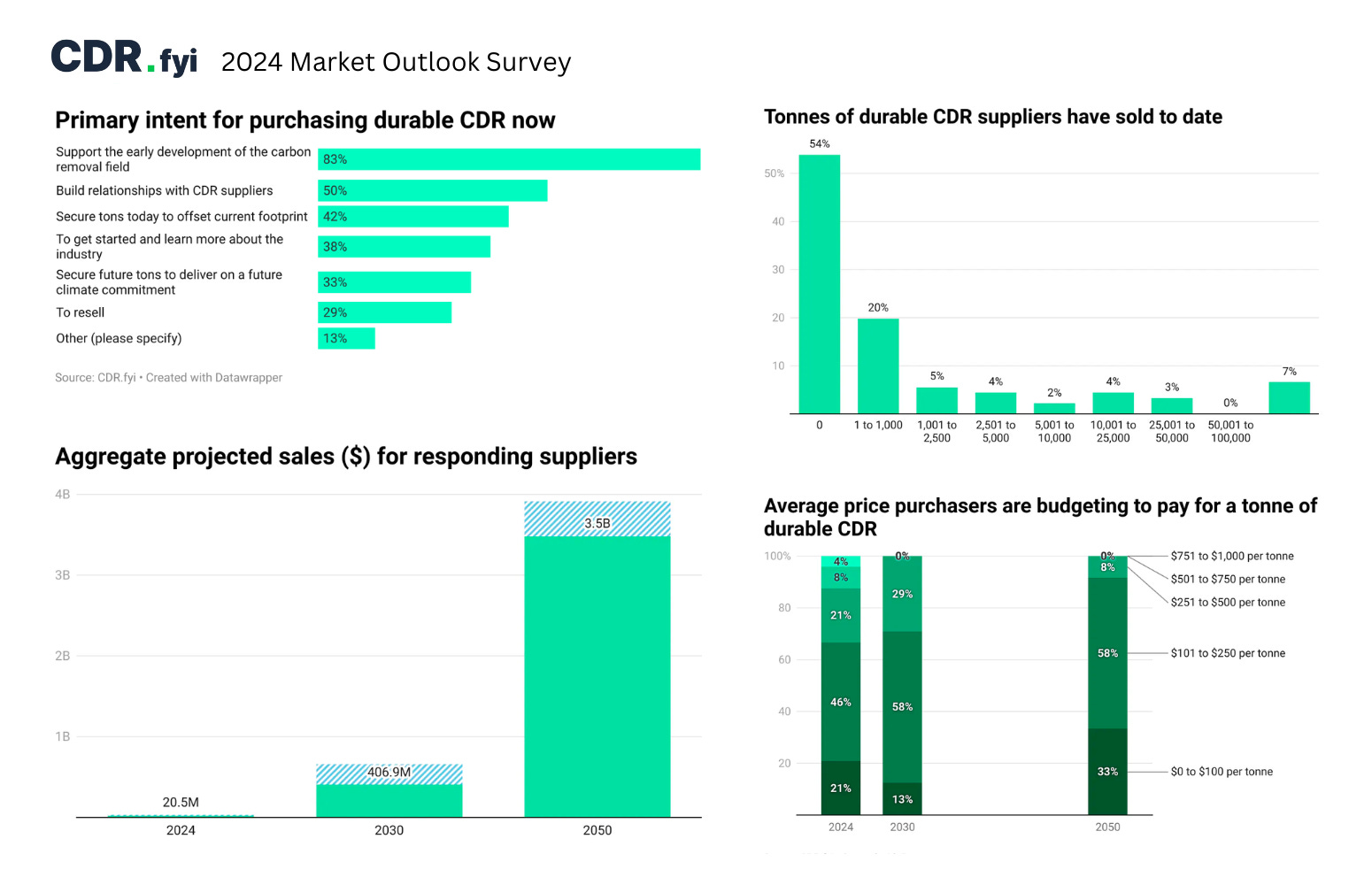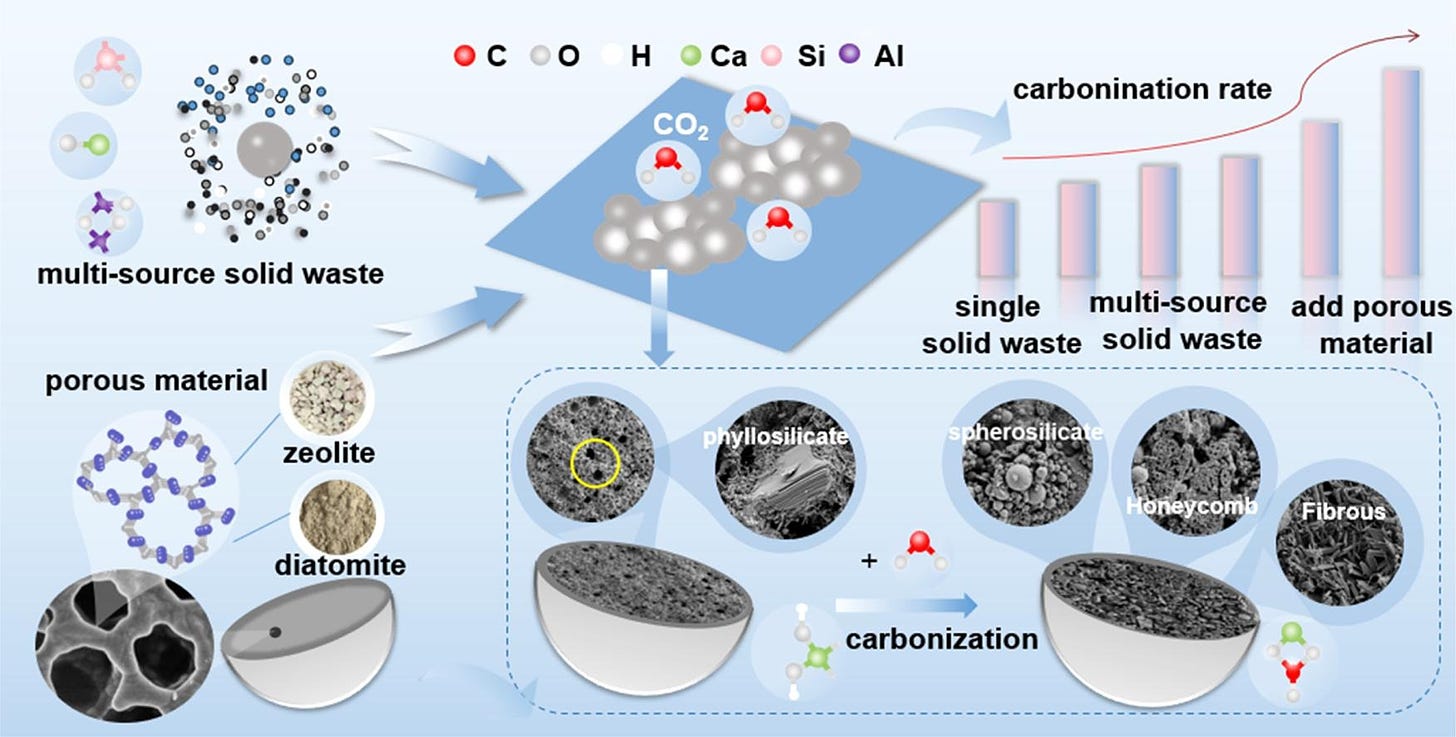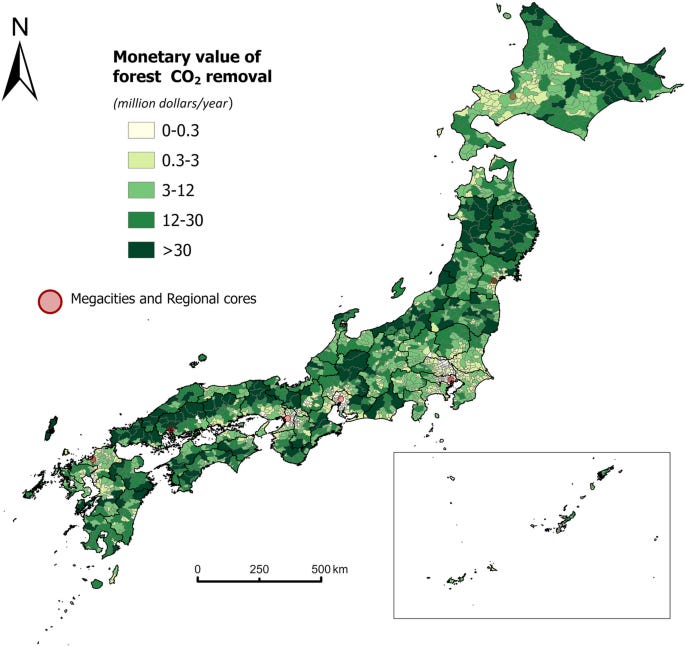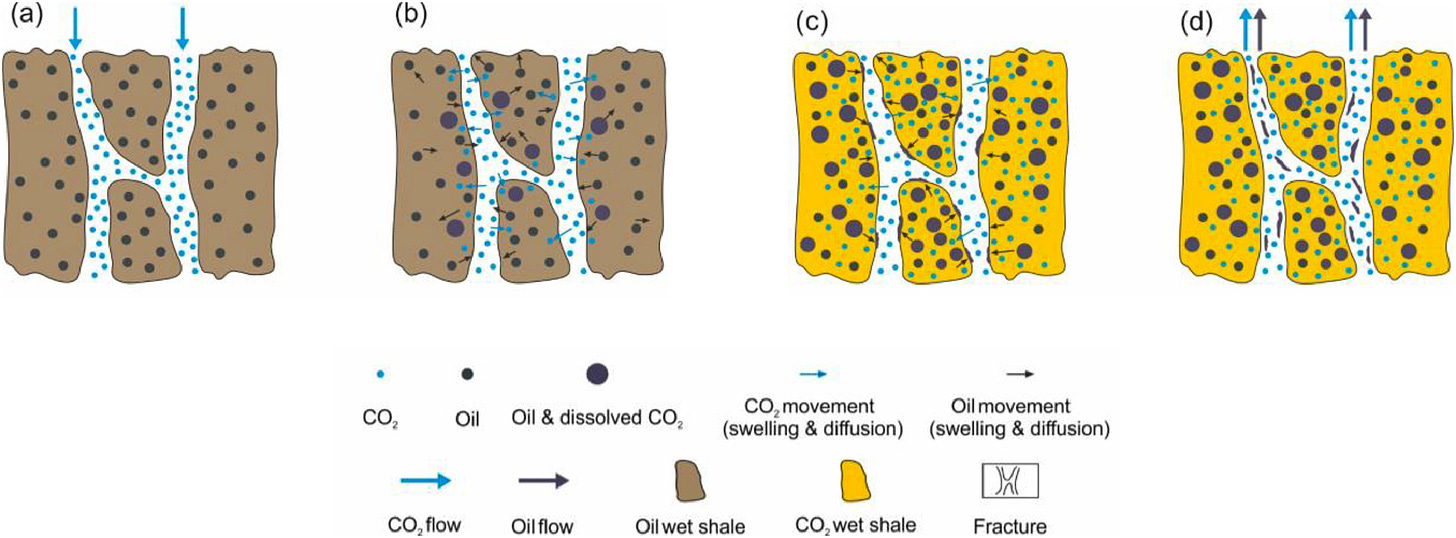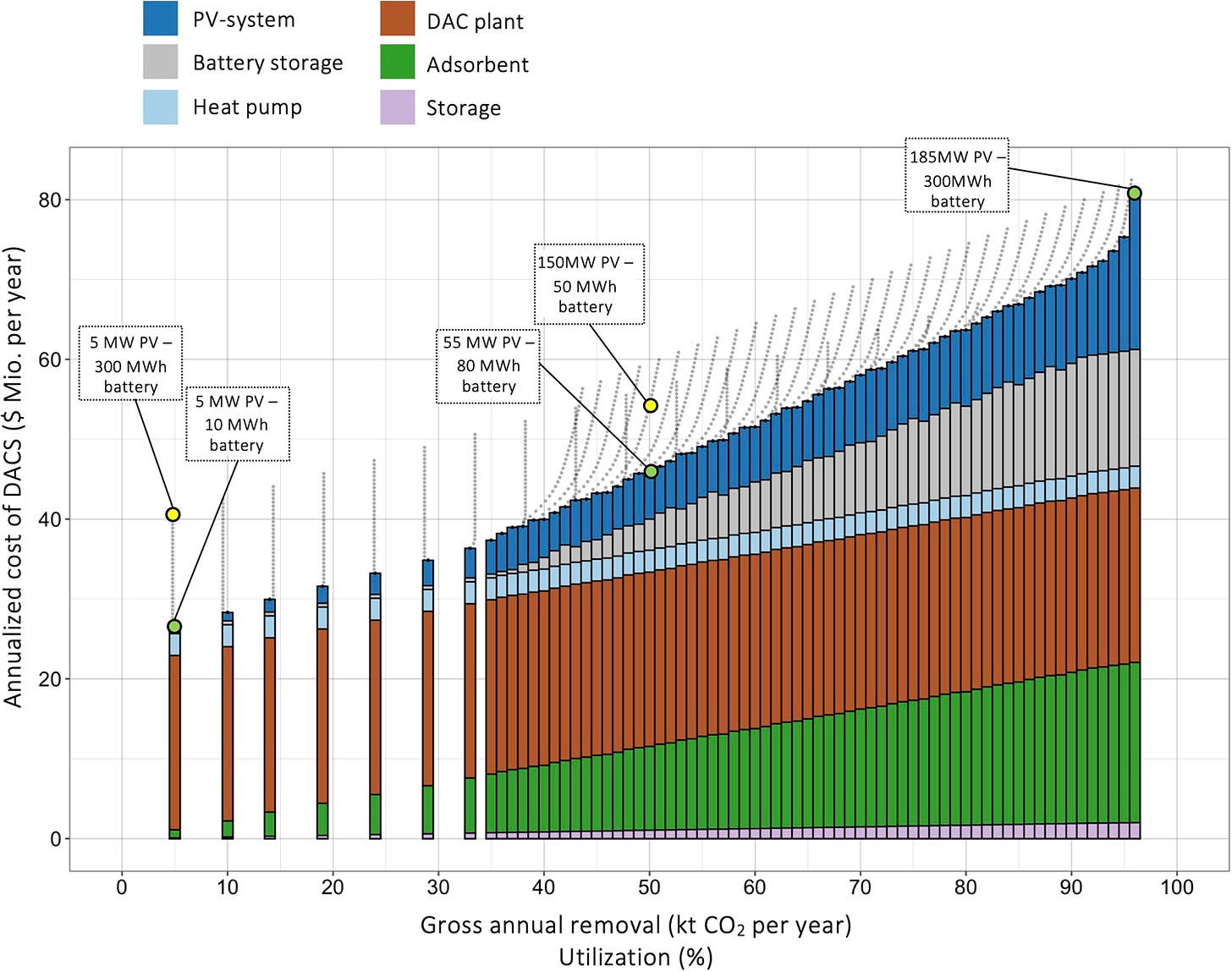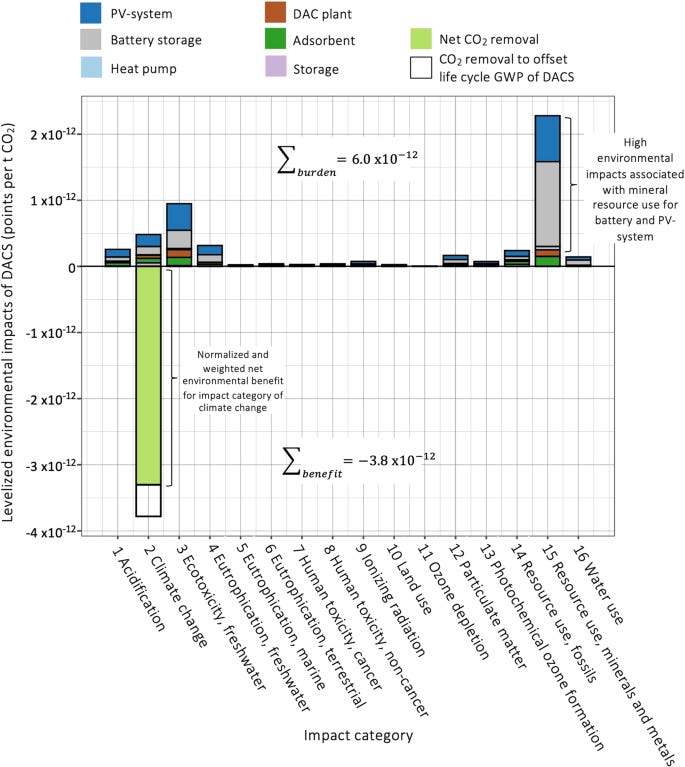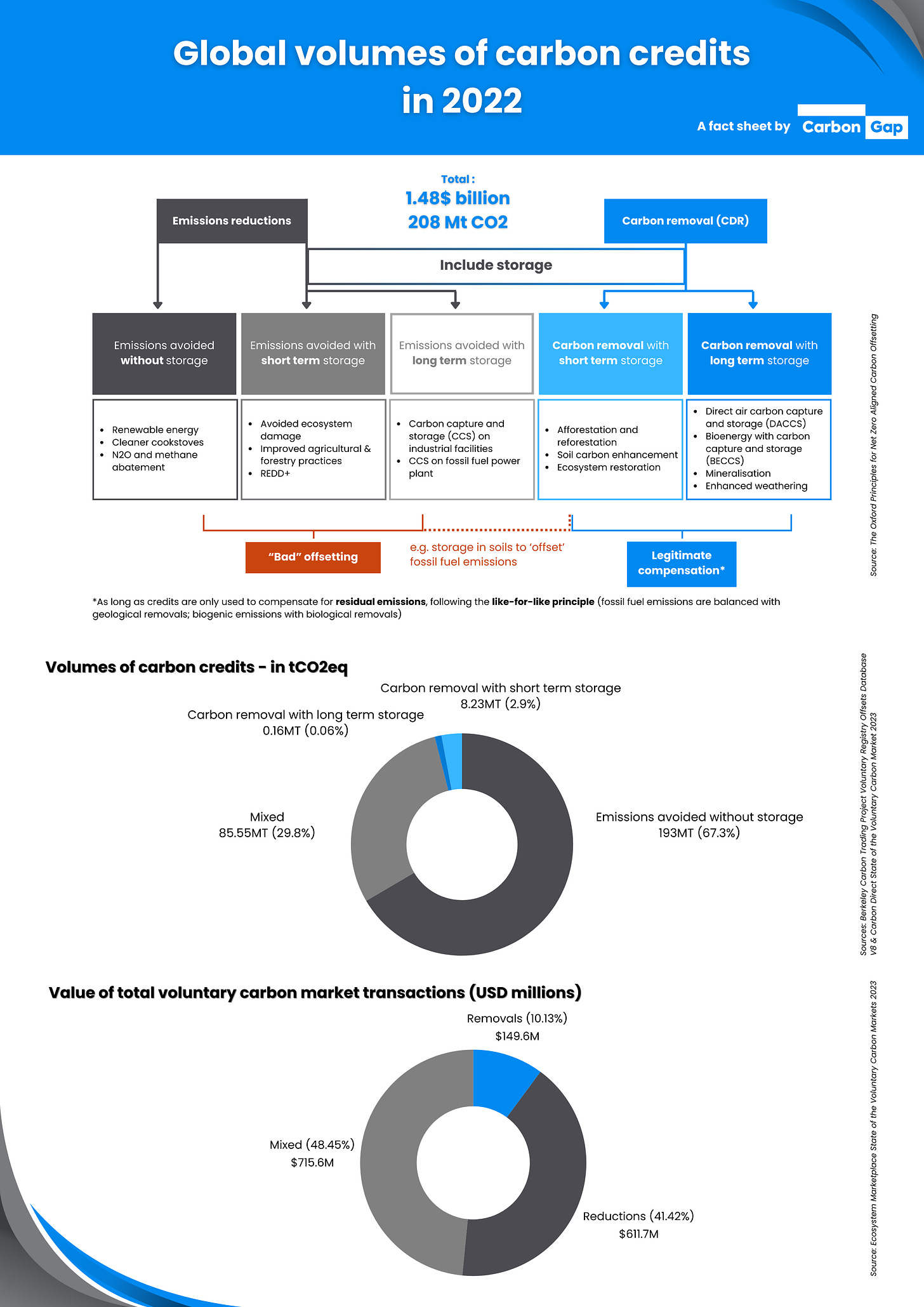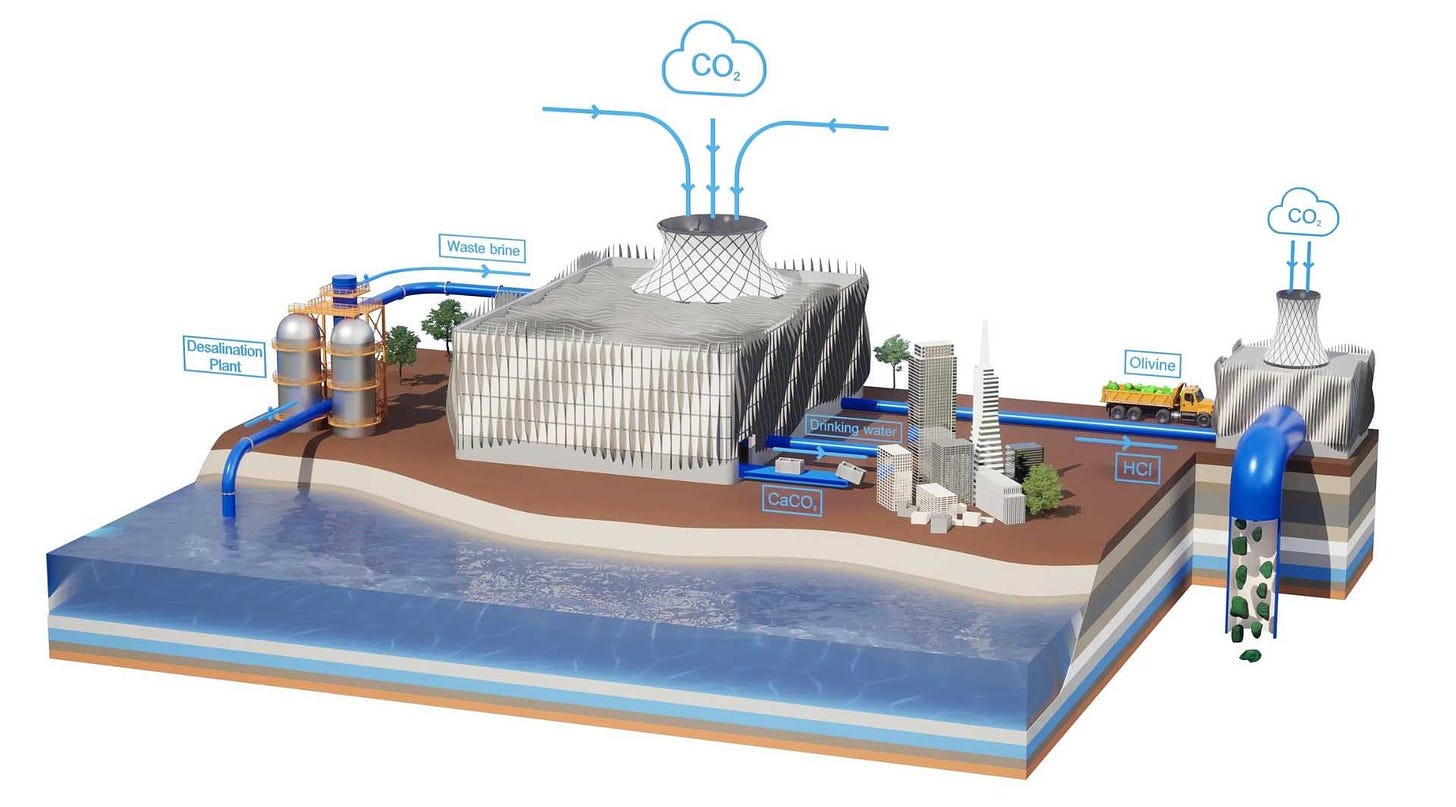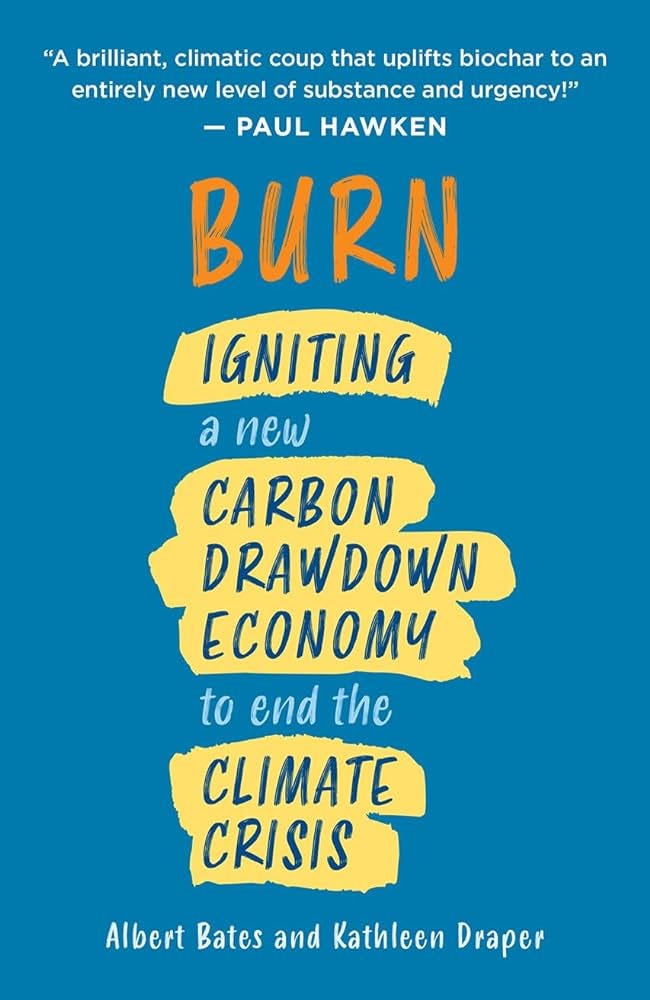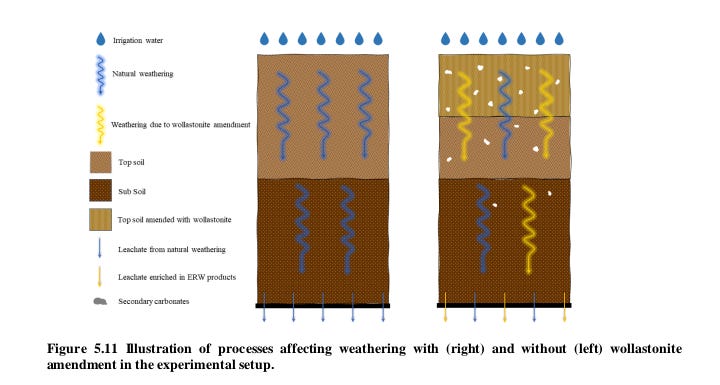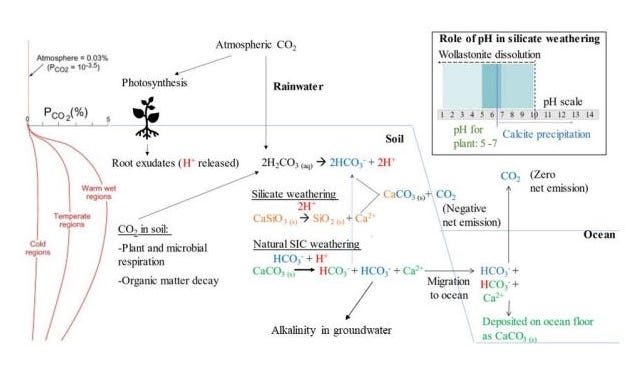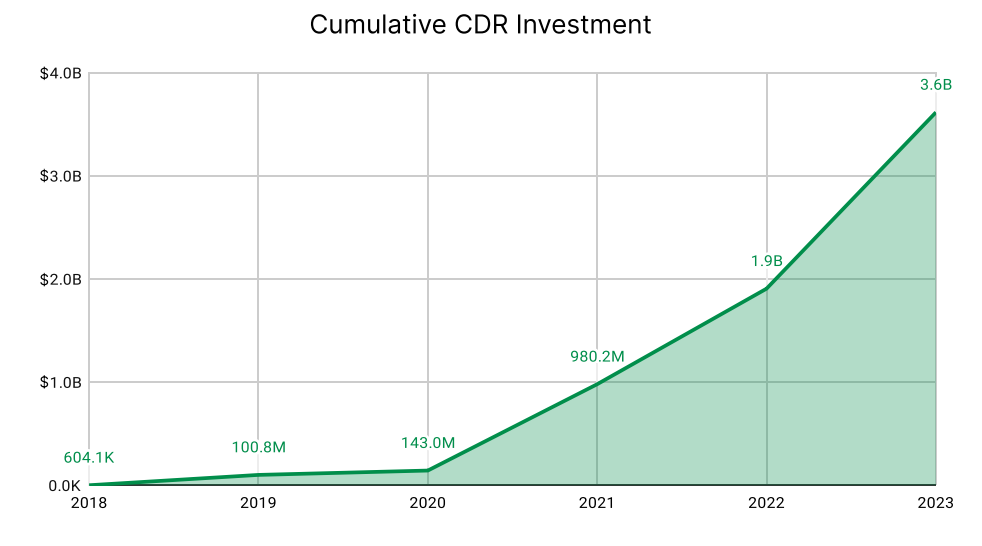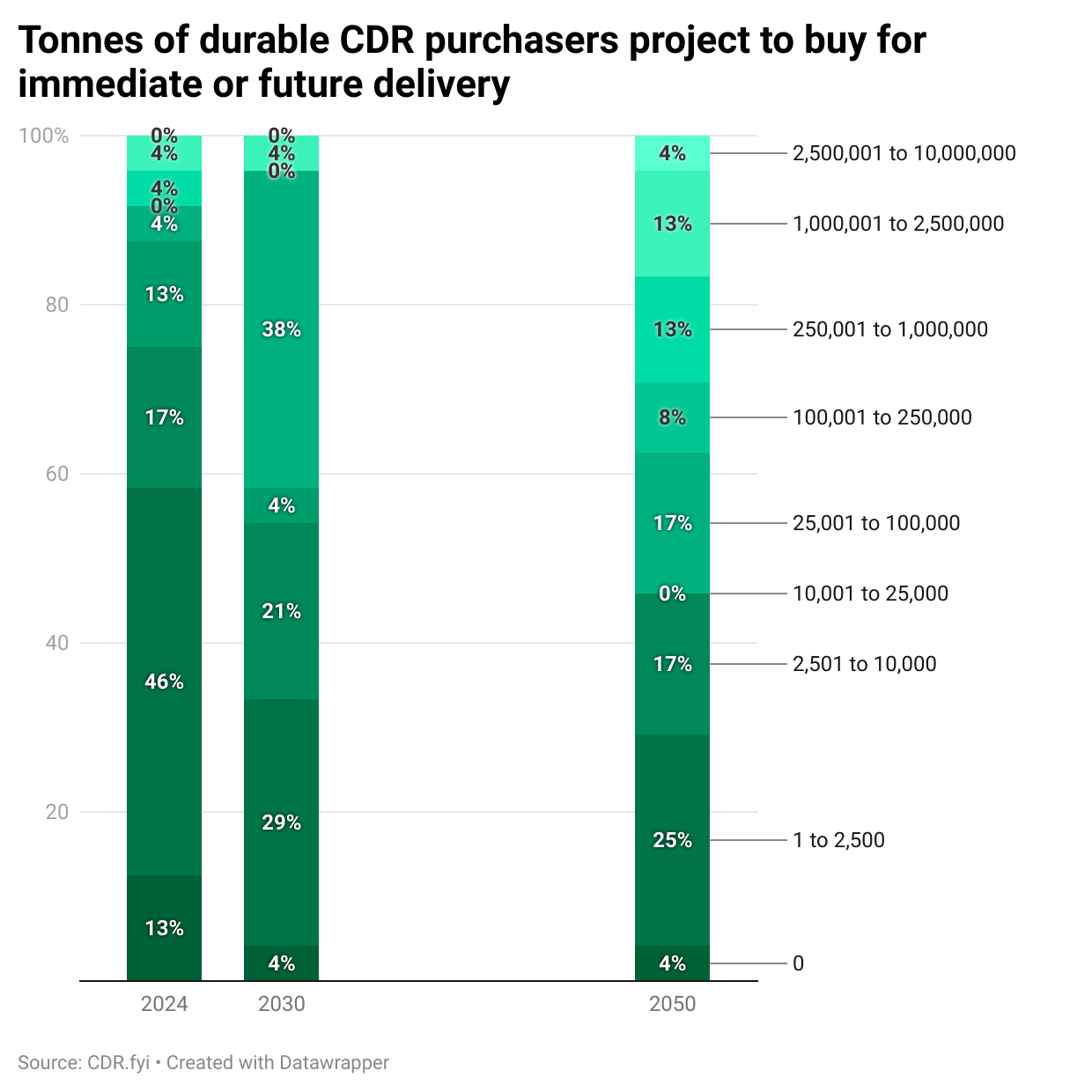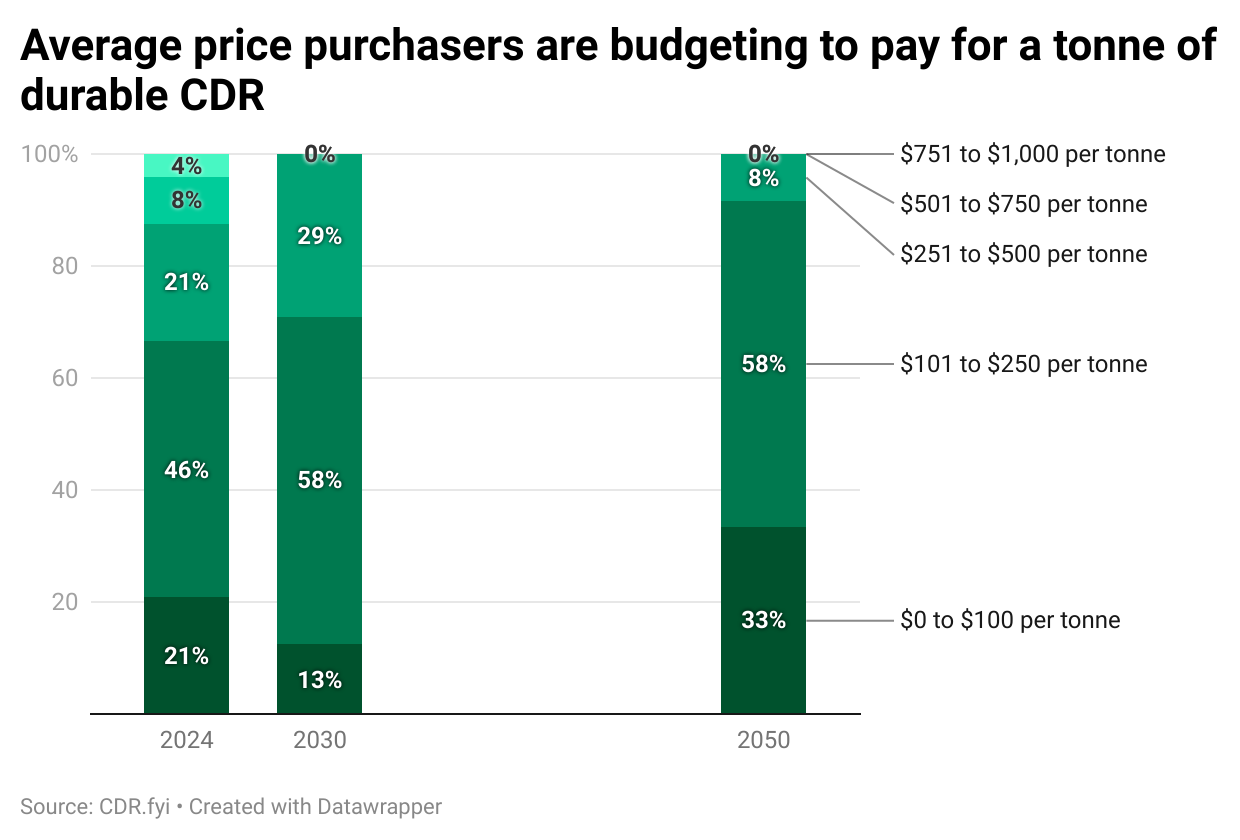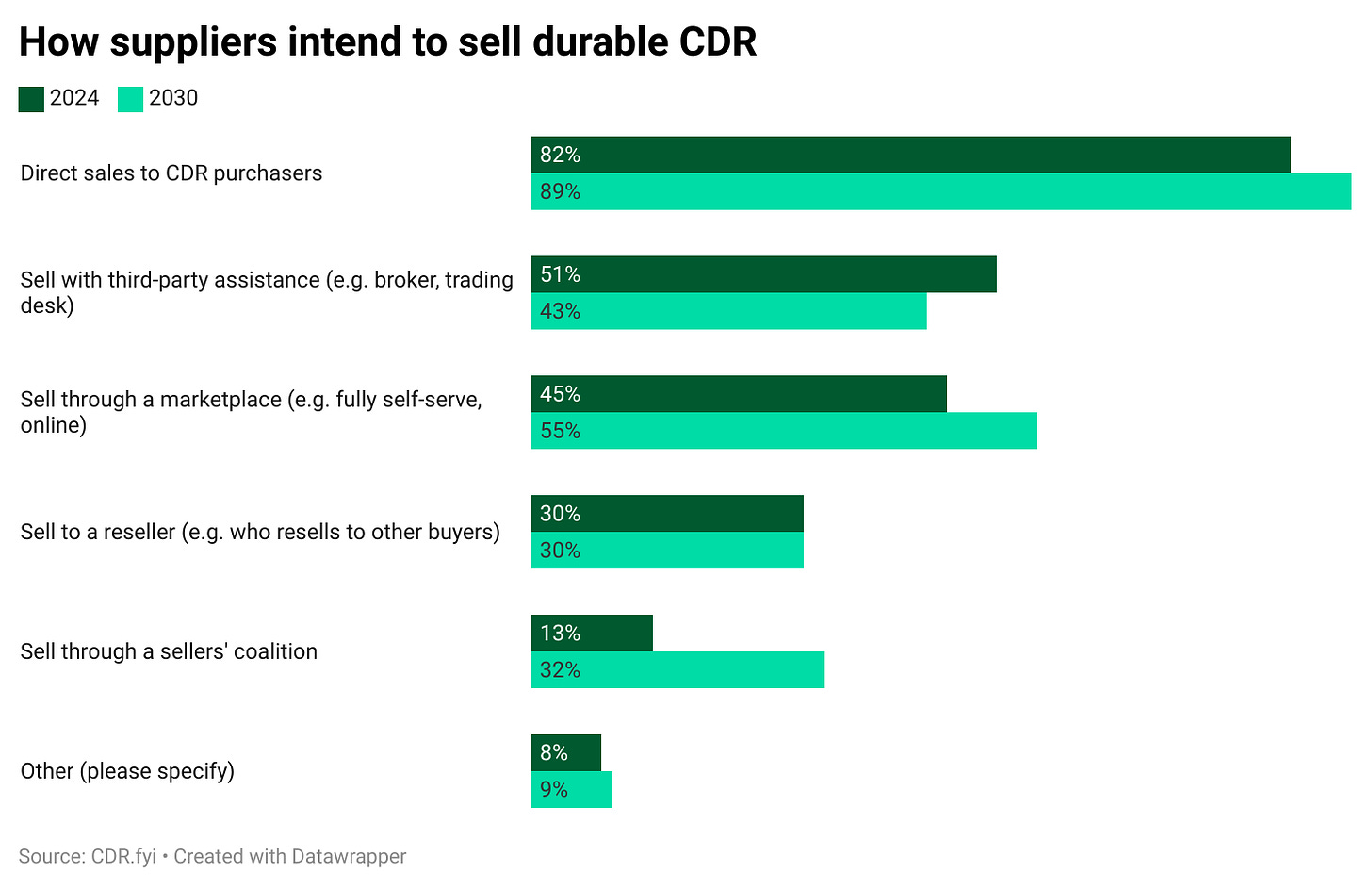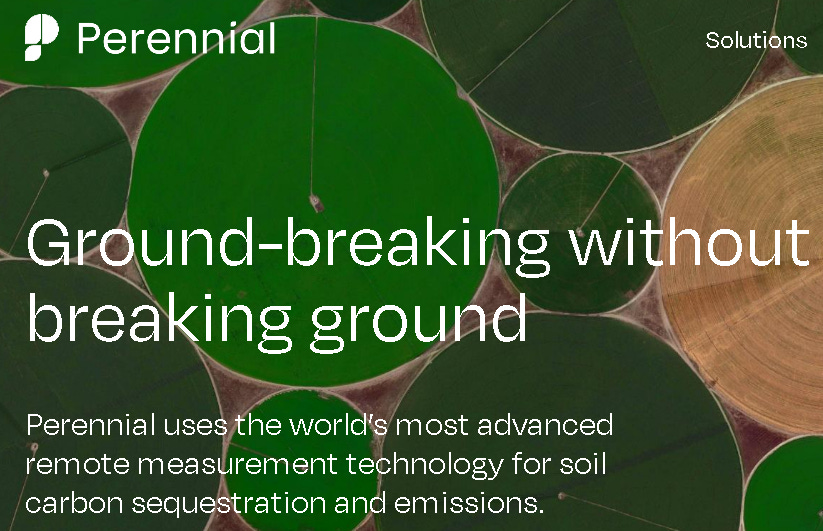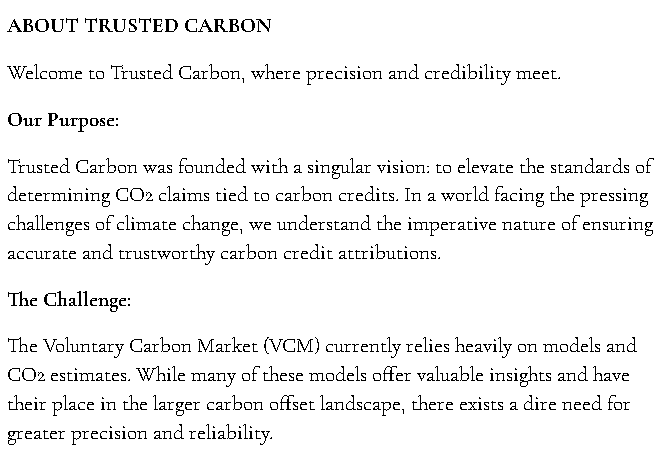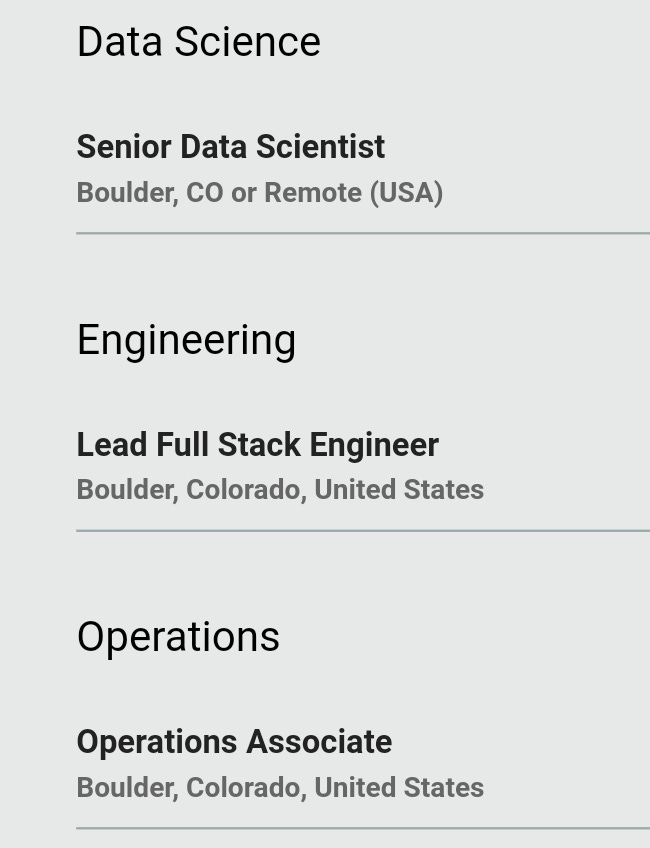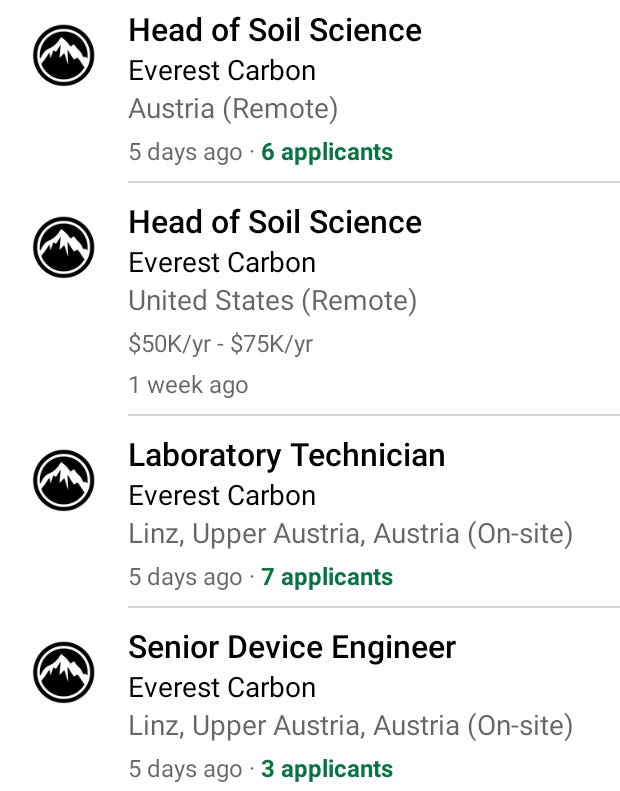CARBON REMOVAL WEEKLY SUMMARY (15 JANUARY - 21 JANUARY 2024)-WEEK#03
Links to recent scientific papers, web posts, upcoming events, job opportunities, podcasts, and event recordings, etc. on Carbon Dioxide Removal Technology.
🚨DEADLINES
(NEW) Call for Papers: Biochar Journal Special Issues | Deadline: 31 January 2024
The SOLAS Climate intervention implementation team is looking for ocean experts to join work on developing regional nodes to develop standards for marine Carbon Dioxide Removal initiatives | Deadline: 31 January 2024
Electrochemical Processes for Carbon Dioxide Removal and Long-Term Storage | Manuscript Submission Deadline: 31 January 2024
Bezos Earth Fund $1M Greenhouse Gas Removal Ideation Prize | Deadline to Submit Proposals: 01 February 2024
(NEW) The application of biotechnology to carbon removal, Intent to Submit Online Form | 26 February 2024
Call for Proposals (Full Application online form) will be available on 1 March 2024 with the final submission due on 26 April 2024.
(NEW) National Biochar Awards | Nominations close 29 February 2024
Exploratory Grants for Atmospheric Methane Research: Spark Climate Solutions, a science-driven nonprofit, requests research proposals to advance scientific understanding of existing methane sinks and potential atmospheric methane removal approaches | Deadline: 01 March 2024
(NEW) Remove accelerator program open applications for their upcoming sixth cohort of CDR startups | Deadline to apply: 01 March 2024
Apply to Cohort 4 of Venture For ClimateTech – 2024 | Deadline: 01 March 2024
Extension: Biogeosciences Special Issue on OAE Environmental Impacts | 31 March 2024
Environmental Research Letter (ERL) - Focus Issue on Carbon Dioxide Removal (CDR) | Article Submission Deadline: 24 May 2024
The Climate Intervention Environmental Impact Fund (CIEIF) announced another round of three grants for the first half of 2024 with increased award amounts of $65,000 each | Application Deadline: 01 June 2024
💸COMMERCIAL NEWS
1PointFive and Trafigura Announce Direct Air Capture Carbon Removal Credit Agreement (1PointFive)
Deep Sky And Greenlyte Carbon Sign New DAC Deal (Carbon Herald)
Carbonaires has secured a strategic investment from KTM Chemicals S.A (Carbonaires)
K-water, BKT, and Capture6 announce their strategic partnership to remove CO₂ while recovering freshwater and minimizing brine discharge in South Korea (Capture6)
These startups are teaming up to decarbonize cement and concrete (Canary Media)
UK Government approves planning application for BECCS at Drax Power Station (Drax)
📝RESEARCH PAPERS
Biochar-concrete: A comprehensive review of properties, production and sustainability
Barbhuiya, S., Das, B. B., & Kanavaris, F. (2024). Biochar-Concrete: A Comprehensive Review of Properties, Production and Sustainability. Case Studies in Construction Materials, e02859.
Modification of multi-source industrial solid waste with porous materials to produce highly polymerizeosilica gel: Microstructure optimization and CO2 mineralization enhancement mechanism
Hu, Y., Huan, Q., Lai, J., Yao, X., Song, C., & Song, M. (2024). Modification of multi-source industrial solid waste with porous materials to produce highly polymerizeosilica gel: Microstructure optimization and CO2 mineralization enhancement mechanism. Separation and Purification Technology, 126225.
Forest carbon removal potential and sustainable development in Japan
Zhang, B., Imbulana Arachchi, J., & Managi, S. (2024). Forest carbon removal potential and sustainable development in Japan. Scientific Reports, 14(1), 647.
Potential for CO2 storage in shale basins in China
Wang, J., Wang, K., Shan, X., Taylor, K. G., & Ma, L. (2024). Potential for CO2 storage in shale basins in China. International Journal of Greenhouse Gas Control, 132, 104060.
Oceanic Blue Carbon in Seas around Taiwan
Hsieh, H. H., Shih, Y. Y., Wu, S. H., Bacosa, H. P., & Hung, C. C. (2023). Oceanic Blue Carbon in Seas around Taiwan. Marine Research, 3(2), 19-36.
Atmospheric CO2 emissions and ocean acidification from bottom-trawling
Atwood, T. B., Romanou, A., Devries, T., Lerner, P. E., Mayorga, J. S., Bradley, D., ... & Sala, E. Atmospheric CO2 emissions and ocean acidification from bottom trawling. Frontiers in Marine Science, 10, 1125137.
Estimating Soil Carbon Sequestration of Jatropha for Sustainable Aviation Fuel Pathway
Zhang, Z., Li, J., Wang, Z., Liu, H., & Wei, K. (2024). Estimating Soil Carbon Sequestration of Jatropha for Sustainable Aviation Fuel Pathway. Water, Air, & Soil Pollution, 235(1), 47.
Biochar reduced the mineralization of native and added soil organic carbon: evidence of negative priming and enhanced microbial carbon use efficiency
Kalu, S., Seppänen, A., Mganga, K. Z., Sietiö, O. M., Glaser, B., & Karhu, K. (2024). Biochar reduced the mineralization of native and added soil organic carbon: evidence of negative priming and enhanced microbial carbon use efficiency. Biochar, 6(1), 7.
Global biomethane and carbon dioxide removal potential through anaerobic digestion of waste biomass
Feng, Y., & Rosa, L. (2024). Global biomethane and carbon dioxide removal potential through anaerobic digestion of waste biomass. Environmental Research Letters.
Farming Technologies and Carbon Sequestration Alternatives to Combat Climate Change Through Mitigation of Greenhouse Gas Emissions
Nthebere, K., Apoorva, M. R., Chandra, M. S., Yadav, M. B. N., & Prakash, T. R. (2024). Farming Technologies and Carbon Sequestration Alternatives to Combat Climate Change Through Mitigation of Greenhouse Gas Emissions. In Climate Crisis: Adaptive Approaches and Sustainability (pp. 253-275). Cham: Springer Nature Switzerland.
Response of vegetation carbon sequestration potential to the effectiveness of vegetation restoration in karst ecologically fragile areas in Guizhou, southwest China
Zhu, M., Zhou, Z., Wu, X., Liu, R., Zheng, J., Wang, J., & Wan, J. (2024). Response of vegetation carbon sequestration potential to the effectiveness of vegetation restoration in karst ecologically fragile areas in Guizhou, southwest China. Ecological Indicators, 158, 111495.
Carbon Dioxide Uptake Estimation for Spanish Cement-Based Materials
Sanjuán, N., Mora, P., Sanjuán, M. Á., & Zaragoza, A. (2024). Carbon Dioxide Uptake Estimation for Spanish Cement-Based Materials. Materials, 17(2), 326.
The additionality problem of ocean alkalinity enhancement
Bach, L. T. (2024). The additionality problem of ocean alkalinity enhancement. Biogeosciences, 21(1), 261-277.
Smart Farming and Carbon Sequestration to Combat the Climate Crisis
Raj, A. D., & Sankar, M. Smart Farming and Carbon Sequestration to Combat the Climate Crisis. Climate Crisis: Adaptive Approaches and Sustainability, 293.
Co-assessment of costs and environmental impacts for off-grid direct air carbon capture and storage systems
Gutsch, M., & Leker, J. (2024). Co-assessment of costs and environmental impacts for off-grid direct air carbon capture and storage systems. Communications Engineering, 3(1), 14.
The synergistic role of carbon dioxide removal and emission reductions in achieving the Paris Agreement goal
Adun, H., Ampah, J. D., Bamisile, O., & Hu, Y. (2024). The synergistic role of carbon dioxide removal and emission reductions in achieving the Paris Agreement goal. Sustainable Production and Consumption.
Tapping Carbon Sequestration Potential of Blooming Macroalgae to Mitigate Climate Change
Zhang, Y., Liu, D., & Jiao, N. (2023). Tapping carbon sequestration potential of blooming macroalgae to mitigate climate change. Ocean-Land-Atmosphere Research, 2, 0033.
📰WEB POSTS
Carbon removals: 2024 watching brief (Illuminem)
How Kern County's Carbon Removal Industry Can Save California's Oil Country (KQED)
The 'dark earth' revealing the Amazon's secrets (BBC)
24/7 Monitoring of soil gas pCO₂ concentrations in large scale ERW experiments with low cost electronics (Carbon Drawdown)
Analysis: development of BECCS at Drax Power Station projected to save UK £15bn and offset carbon emissions equivalent to all departing flights from Heathrow (Drax)
Biomass Can Fight Climate Change, but Only if You Do it Right (World Resources Institute)
NY’s first dairy farm biochar kiln advances green agriculture (Cornell Chronicle)
Green Star Royalties Announces Improved Regenerative Agriculture Carbon Royalty Structure and Verra Registration Progress (Junior Mining Network)
Carbon removal is ready for its close-up at Davos (Politico Pro)
Stacking DAC for bankable carbon removal (Latitude Media )
Suck carbon out of the atmosphere and desalinate seawater at the same time? This startup is trying (The Verge)
Industrial CDR, Carbon Dioxide Removal will be big & profitable business for the NORTH (40 billion Mt CO2 by 2040) (Ecosocial CO2 Removal)
Carbon credits and compensation claims: the state of the VCM (Carbon Gap)
Manage your Company Profile on CDR.fyi (CDR.fyi)
Valorizing Agrifood Waste Streams into Biochar (Cleantech Group)
Tonko, Peters, Coons, & Whitehouse Introduce Carbon Dioxide Removal Legislation (Paul D. Tonko)
EU Set to Seek Ambitious Goal of 90% Emissions Cut by 2040 (Financial Post)
Carbon Sinks: Where is Carbon Stored? (Klimate.co)
Google X spinout hopes to be leader in direct air capture (Silicon Valley Business Journal)
IPCC agrees on the set of scientific reports for the seventh assessment cycle (IPCC)
Marine biomass carbon removal and storage: sink it and forget it? (Illuminem)
350 companies are calling for tech openness of the CRCF (CRCF Trilogue)
📗BOOKS
Chapter: Geoengineering and Public Policy—Routledge Handbook of Environmental Policy
Burn: Igniting a New Carbon Drawdown Economy to End the Climate Crisis
📖THESES
Quantification of Pedogenic Carbonate Formed Due to Enhanced Weathering in Agricultural Soil and Subsoil
Public Perception's Role in Carbon Removal at Scale: The Importance of Public Opinion on Barriers to Implementation of CDR
📑REPORTS
AlliedOffsets & Carbon Herald's 2023 CDR Market Report
Offshore cultivation of seaweeds to capture CO2 and alleviate global changes: a feasibility analysis for the Israeli Mediterranean Sea
Global Carbon Dioxide Removals (CDR) Industry Report 2024: Historical Revenue Data for 2022, Estimates for 2023, and CAGR Forecasts through 2028
First Movers Coalition Cement and Concrete Procurement Guide
Towards efficiency: Carbon credit pricing and risk
Net or gross negative emissions, importance for negative emissions accounting
Carbon removals in the EU elections—The Negative Emissions Platform’s Manifesto for the 2024 European elections
2024+ Market Outlook Summary Report
🧰CDR FIRMS
Perennial
Trusted Carbon
📆UPCOMING EVENTS
(NEW) Implementing Carbon Management Workshop by Carbon Management Network | 23 January 2024
AirMiners January 2024 Town Hall by AirMiners | 24 January 2024
Unlocking Climate Capital to Deploy CDR Technologies by gener8tor | 24 January 2024
(NEW) CCL's Greenhouse Gas Removal Action Team Kickoff with Chris Neidl of Open Air Collective | 25 January 2024
(NEW) Prizes and Pitfalls: Navigating the voluntary carbon market in 2024 by Patch | 29 January 2024
This Is CDR Ep93: Banyu Carbon -- Capturing Carbon with Light! by OpenAir Collective | 30 January 2024
(NEW) Developing a Market for Carbon Removal Offsets That is Fit-for-Purpose by Institute for Carbon Removal Law and Policy | 31 January 2024
Science Communication Training on Ocean Carbon Dioxide Removal by Compass | Session 1: 1-2 February 2024, Session 2: 18 February 2024
CDR Capital Flow Chapter meeting | London Roundtable by Negative Emissions Platform | 01 February and 08 February 2024
MRV for Ocean-Based CDR: Innovations in Modeling and Observations by Ocean Vision | 08 February 2024
DAC Day 2024: Hopes, Hubs, and Hurdles by Bipartisan Policy Center, Department of Energy | 08 February 2024
2024 North American Biochar Conference | 12 - 15 February 2024
mCDR Networking Event during 2024 Ocean Sciences Meeting by Ocean Carbon & Biogeochemistry (OCB), Carbon to Sea, Exploring Ocean Iron Solutions (ExOIS), [C]Worthy, and Ocean Visions | 19 February 2024
(NEW) OCB OAIC and SOLAS Social Gathering during 2024 Ocean Sciences Meeting | 21 February 2024
(NEW) South Australia Forum, Australian Biochar Industry 2030 Roadmap by ANZ Biochar Industry Group | 29 February 2024
The Leading Carbon Removal Business Summit by Carbon UnboundUSA | 22-23 May 2024
Carbonfuture Carbon Removal Summit 2024 by Carbonfuture | 13 June 2024
Negative CO₂ Emissions hosted at the University of Oxford by CO₂RE - The Greenhouse Gas Removal Hub, with financial support from UKRI | 18-21 June 2024
(NEW) 2nd Biochar Malaysia Association International Conference 2024 by International Biochar Initiative | August 13-14, 2024
💼JOB OPPORTUNITIES
Postdoctoral Fellowship In Geochemical Carbon Dioxide Removal at PowerGeolab Trent University
“The PowerGeolab is led by Ian Power, Associate Professor and Canada Research Chair in Environmental Geoscience, and based in the School of the Environment at Trent University in beautiful Peterborough, Canada.
The solid Earth is intricately connected to the atmosphere, hydrosphere, and biosphere with such complexity that many questions remain regarding how the interactions between these “spheres” shape the environment. The goal of our research is to better understand fundamental geochemical, mineralogical, and geobiological processes that are relevant to addressing environmental challenges including carbon dioxide removal, an emerging field in geosciences that is ripe for scientific inquiry and technological advances.”
Operations Associate at International Biochar Initiative
“The International Biochar Initiative (IBI) is a growing non-profit organization seeking support to help IBI achieve our mission to help grow the global biochar workforce and industry.”
Assistant Professor in Carbon Dioxide Removal at Heriot Watt University | Edinburgh, Midlothian, United Kingdom | 31 January 2024
“We are looking for a talented and highly motivated individual to join our learning and teaching activities within the Chemical & Process Engineering programme at the School of Engineering and Physical Sciences (EPS).
Working with colleagues in the Research Centre for Carbon Solutions, you will develop a novel teaching programme and materials for Carbon Dioxide Removal. You will also deliver and assess undergraduate, and postgraduate taught courses in Chemical and Process Engineering based at our Edinburgh campus, collaborating with colleagues at our overseas campuses in Dubai and Malaysia, and will engage with our international learning partners throughout the globe. The role holder will be expected to contribute to teaching and scholarship leadership, academic administration, and course development and enhancement.”
Research Associate in Techno-Economic Analysis of Solvent-Electrochemical Direct Air Capture at Heriot Watt University | Edinburgh, Midlothian, United Kingdom | 14 February 2024
“We are seeking an excellent, creative, and motivated postdoctoral research associate to work with us on the CALORIE-DAC project. The candidate will independently develop rigorous techno-economic analysis of absorbent-based direct air capture technology with electrochemical sorbent regeneration. Methods used include process modelling, the construction of surrogate models, e.g., via machine learning or traditional mathematical methods, uncertainty quantification, capital and operational costing and integration of the above into comprehensive techno-economic analysis. The candidate will collaborate with other scientists funded through the Homeworld Collective Garden Grants and with Homeworld Collective funders to leverage their knowledge on the use of protein engineering for direct air capture.
We are looking for candidates with a range of skills in the performance assessment of chemical/electrochemical based reaction systems, this may include chemical/process engineering, environmental engineering, electrochemical engineering, mathematical modelling.”
Various job openings at Perennial:
“Perennial is building the world’s leading verification platform for soil-based carbon removal. Our vision is to unlock soil as the world’s largest carbon sink. To do that, we are building trusted standards, tools, and technologies to help verify climate-smart agriculture.”
Various job openings at Everest Carbon:
“Everest Carbon believe that geochemical carbon dioxide removal (gCDR) has the potential to become humanity´s most effective CDR pathway. Our business is developing cutting-edge technologies that enable the time- and cost-effective quantification of high-quality carbon removals.”
Director, Sales- Sustainable Agriculture (CPGs) & Director, Sales - Sustainable Agriculture (Ag Retail & Coops) at CIBO | Minneapolis, Minnesota (Hybrid)
“At CIBO, we are committed to driving the transition to more sustainable and regenerative agricultural practices through innovative software solutions.”
🎙️PODCASTS
New CDR Policy and Resources in 2024 | Carbon Removal Newsroom
“What's new in carbon removal? Join us for the 2024 Carbon Removal Newsroom kickoff!
Will 2024 see the emergence of universal carbon market standards? December saw a coalition formed by leading regulatory bodies.
We unpack the implications of California Bill 1305. How does this legislation mandate transparency in voluntary carbon offset marketing? What could this mean for combating greenwashing and ensuring data reliability?
The EPA resources for marine carbon dioxide removal (mCDR) and marine solar radiation management (mSRM) are now online. How do these resources address environmental risks, and what regulatory responsibilities are outlined for safe implementation?How might common principles for high-quality carbon credits reshape industry practices, and what's the significance of transparency and public participation in this process?
Join us as our policy panel takes a look at what’s cooking for CDR in 2024.”
The importance of fungibility in carbon markets - with Carbonaires | The Carbon Removal Show
“With scaling up in mind, this episode dives into an innovative concept that could help the industry take big steps forward. Tom and Emily are joined by Jonny Gilson from Carbonaires and Professor Niall Mac Dowell from Imperial College London to discuss Carbonaires’ ideas for the future of the voluntary carbon market.”
Robert Niven, CEO of CarbonCure, on the potential to turn thousands of concrete plants into carbon removal factories | The Carbon Curve
“Episode 6 of The Carbon Curve is with Robert Niven, Chair and CEO of CarbonCure Technologies.
Carbon removal (or CDR) is often represented as a process that involves pumping captured CO2 back underground where it belongs. But we can actually use CO2 removed from the atmosphere in every day products like plastics, fuels, and building materials. This is a burgeoning industry known as “carbontech” - where innovators are working on carbon neutral, and even carbon negative, products.
One application that’s really intriguing to me is the process of infusing CO2 into concrete. Which means that concrete can potentially serve as a carbon sink, permanently locking away atmospheric CO2 while also reducing the amount of cement needed in the concrete mix - further reducing this essential product’s carbon footprint.
I think this could be really impactful. Concrete is the second most consumed material in the world, second to water. If concrete production was a country, it would be the third largest greenhouse gas emitter on Earth, contributing to roughly 7% of global CO2 emissions. Additionally, because of chemical reactions integral to its production, concrete is really difficult to decarbonize.
Thankfully, there are companies that are using CO2 to make concrete less carbon intensive. I wanted to speak to a leading company that’s working to solve this problem directly, to learn more about their technology, and find out about what businesses and governments can do to help drive greater demand for low carbon concrete.
In this episode, Na’im and Rob discuss:
* The carbon intensity of the concrete industry
* An overview of CarbonCure’s technology
* CarbonCure as a carbon removal company, and using carbon removal credits to erase low carbon concrete’s “green premium”
* Policies that can support the scale-up of low carbon concrete, as well as opportunities for cities and communities to help drive demand
* What Canada do to help commercialize more carbon removal companies like CarbonCure
* The next six months for CarbonCure
Na’im Merchant is an advisor and thought partner to start-ups, policy groups, and research organizations on scaling up the climate technologies to meet the monumental challenge removing billions of tons of CO2 from the atmosphere to combat climate change. Every two weeks, Na’im will release a short interview with individuals advancing bold new ideas and taking a collective action approach to scaling up carbon removal.”
This company has created a recipe for carbon-zero cement | NPR
“Producing cement is a major source of carbon emissions — 8% of the global total. A company in Massachusetts has altered the recipe, finding a way to produce carbon-zero cement instead.”
Sourcing biomass for carbon removal | Catalyst with Shayle Kann
“Plants capture hundreds of gigatons of carbon every year in timber, crops, and other forms of biomass. Much of that carbon gets released back into the atmosphere through natural processes and human intervention. But there are a few ways that we can lock it away for good, like biochar, bio-oil, and bioenergy with carbon capture and storage, or BECCS — all processes that fall under the umbrella of biomass carbon removal.
The International Panel on Climate Change calls carbon removal “unavoidable” — and biomass is a leading carbon removal contender. But everyone wants a slice of the biomass pie. Airlines want it for jet fuel. Midwestern legislators want it for ethanol. Homebuilders want it for construction. Oh, and humans want it for food. By 2050 potential demand for biomass could far outstrip supply.
So what kinds of biomass should we use for carbon removal — and where should we get that biomass from?
In this episode, Shayle talks with Dr. Bodie Cabiyo, senior forest scientist at climate science consultancy Carbon Direct and lead author of A Buyer’s Guide to Sustainable Biomass Sourcing for Carbon Dioxide Removal.
They talk about topics like:How carbon removal is already competing with other uses for biomass.
The complicated question of what counts as “waste,” which some BECCS companies are using to claim carbon reductions.
Principles for sustainably sourcing biomass for carbon removal, like tracing chain of custody and avoiding market distortions.
The environmental and carbon math tradeoffs involved in different sources of biomass.
What Shayle would do with biomass if he were an omnipotent global leader.”
Agent based models - Perkins | Reviewer 2 does geoengineering
“NPC vs IAM. Oliver Perkins explains why simple agent-based models (non playable characters, if you like) might outperform the integrated assessment models that have led to such outlandish predictions for CDR.
Paper: Toward quantification of the feasible potential of land-based carbon dioxide removal (https://doi.org/10.1016/j.oneear.2023.11.011)”
Messing with nature - Woodhouse | Reviewer 2 does geoengineering
“What is nature? Does it matter beyond its direct usefulness? Do animals only have rights if they're conscious? When did man become morally responsible for environmental degradation? When can and should we fiddle with the natural world? Elliott Woodhouse explains the differing views to @geoengineering1. A blog post is available, summarising his PhD https://www.sheffield.ac.uk/lc3m/blogs/phd-spotlight-elliott-woodhouses-ethics-climate-engineering”
🎥YOUTUBE VIDEOS
How carbon capture could revolutionize the concrete industry | CBC News
“We see concrete structures around us every day, but did you know that making concrete produces enormous amounts of greenhouse gas? One Alberta cement plant is trying to be part of the solution. CBC’s Stephanie Cram visited the plant to see the new, climate-friendly processes that may be cemented as the future norm.”
Governing Permanence of CDR: A Typology of Policy Measures | Institute for carbon Removal Law and Policy
“There is an array of CDR methods, and implementation strategies need to reflect their differences, including the permanence of carbon storage of these respective approaches. Measures that govern CDR permanence are crucial for the effective scale-up and delivery of CDR, which is in turn vital to achieving net-zero targets.”
Climate Tech, Sink or Swim | Marty Odlin (Running Tide) | Slush 2023 | Slush
“With climate change, we’re all going down together. In addition to deep emissions cuts, a massive, global, carbon removal industry will be required for us to reach our climate goals. However, corporate commitments for 2030 environmental goals reveal $5b-$30b supply shortfall.”
Remember that statement to the UN letter we signed? | IT’S GO TIME ACTIONS ON CARBON REMOVAL
“AirMiners exists to empower risk takers to reverse climate change. Our vision is a thriving human civilization on Earth. We provide the catalytic infrastructure for innovators working to remove a billion tons of carbon by 2030.”
Green agriculture gets a boost from New York’s first dairy farm biochar kiln | Cornell University
“Cornell expertise helps turn dairy waste into a soil amendment with environmental and economic benefits.”
Unveiling Iceland Carbon Capture revolutionary Tech | EttanEhsan
“In this video, we explore the groundbreaking technology behind carbon capture and storage (CCS) in the land of fire and ice.”
A transatlantic dialogue: carbon removal policy in the EU and USA | Carbon Gap
“In this first webinar of our EU/USA comparison, we will be examining each region’s current policy landscape and the gaps in their approach to carbon removal. In doing so, we aim to identify means to connect CDR policies and stakeholders on both sides of the pond and support international CDR policy progress.”
CCRI Seminar - Dr Caitlin Hafferty: Participatory governance for scaling-up Nature-based Solutions | Countryside and Community Research Institute
“Dr Caitlin Hafferty is a Postdoctoral Researcher in Environmental Social Science at the Environmental Change Institute, based at the School of Geography and the Environment, University of Oxford. With expertise in Environmental Social Science and Human Geography, she is interested in tackling interlinked socio-economic and environmental issues through inter- and transdisciplinary approaches, conducting theoretically-informed research with real-world impacts. Caitlin currently works on two large interdisciplinary projects called the Leverhulme Centre for Nature Recovery and the Agile Initiative. She completed her PhD at the Countryside and Community Research Institute in 2022, focusing on engagement in UK environmental decision-making.”
The Marine Carbon Cycle Explained | Natural Worlds Facts
“The marine carbon cycle consists of the biological pump, the carbonate pump and the physical pump. The biological processes of respiration, predation, death and decomposition, along with physical processes such as the thermohaline circulation, work together to remove carbon from the atmosphere and sequester it in the oceans. In this video we'll explore what makes the oceans a net carbon sink, and why the marine world is so important to the global carbon cycle.”




